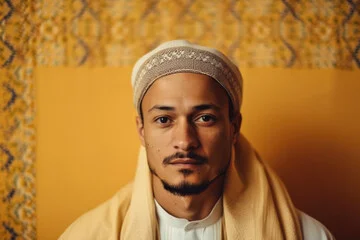The Constitution of Madinah and the Emergence of a Distinct Community
During this transformative period, the Constitution of Madinah was established as clans who recognized Muhammad as God’s Messenger banded together in a unified federation. This document not only set the framework for governance but also marked the moment when the early Muslim community defined itself as unique and separate from others.
Inclusivity and Community Guidelines
The early framework clearly outlined the place of non-Muslims within the community. For example, Jews were recognized as protected people, or dhimmis, provided they adhered to the community’s regulations. This policy laid the foundation for later practices during subsequent expansions. Christians and Jews, by paying a modest tax, were allowed to practice their faiths freely and participate as associate members of the state, whereas polytheists were not permitted within a community devoted to the worship of the One God.
Outreach and Alliances Across Lands
Early biographers record that it was around this time that Muhammad dispatched messages to influential rulers across the known world—including leaders in Persia, Byzantium, Abyssinia, and Egypt—urging them to embrace Islam. Although the community’s military strength was still developing (even after the challenge of the Battle of the Trench), Muhammad’s strategy of forging alliances among various tribes bore fruit. By 628, Muhammad, along with approximately fifteen hundred followers, had secured the respect and recognition required to claim access to the Ka’bah—a milestone that underscored the growing influence of the new faith.
Peaceful Conquest of Makkah
Not long after establishing an Islamic state in Madinah, Muhammad’s former adversaries began to acknowledge his leadership. In 629, he reentered Makkah and achieved a peaceful conquest characterized by tolerance. This momentous event not only reaffirmed his status as a respected leader but also led to the eradication of idols from the Ka’bah, thereby ending longstanding pagan practices. Alongside these events, prominent figures such as ‘Amr ibn al-’As and Khalid ibn al-Walid—once fierce opponents—embraced Islam and pledged their loyalty to Muhammad, highlighting the profound transformation within the Arabian peninsula.
An Enduring Legacy
For many, Muhammad’s return to Makkah marked the pinnacle of his mission. Yet, in 632, just three years later, he fell seriously ill and passed away on a hot afternoon, with his close companion Aisha by his side. His departure was deeply felt by a community for whom he was more than a charismatic leader or capable administrator—he embodied the divine teachings he had received.
His life and the revelations of the Quran have since guided countless individuals and reshaped the course of human history. Even in the face of his death, the community’s dynamic spirit remained undiminished, and his central mission—to spread the message of the Quran—continued. As one companion poignantly remarked, while the man had left the world, the eternal nature of God’s message endured.


Embracing Faith, One Insight at a Time!
The teachings of the Quran have always guided my path. With a deep passion for Islamic knowledge, I strive to blend the wisdom of tradition with the relevance of today, making the timeless messages of Islam accessible and meaningful for everyone.
Muslim Culture Hub is my platform to share historical insights and thought-provoking articles, exploring both well-known and lesser-discussed aspects of Islamic culture and beliefs. My mission is to create an inclusive online space where everyone can learn, strengthen their faith, and connect with the profound message of Islam.
Join the journey!
May peace be upon you.







